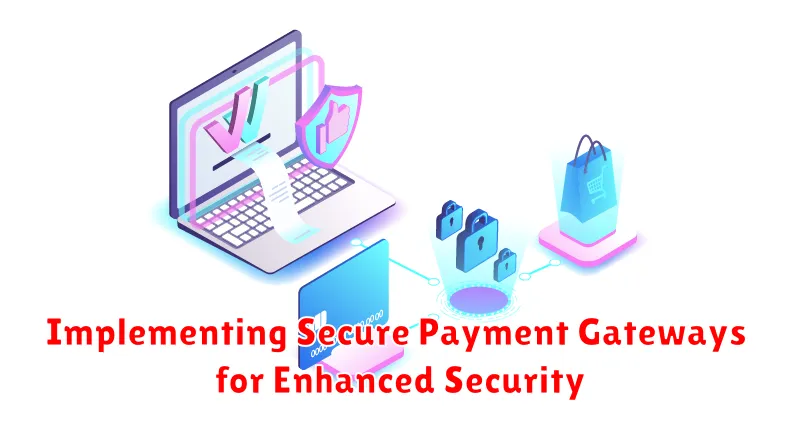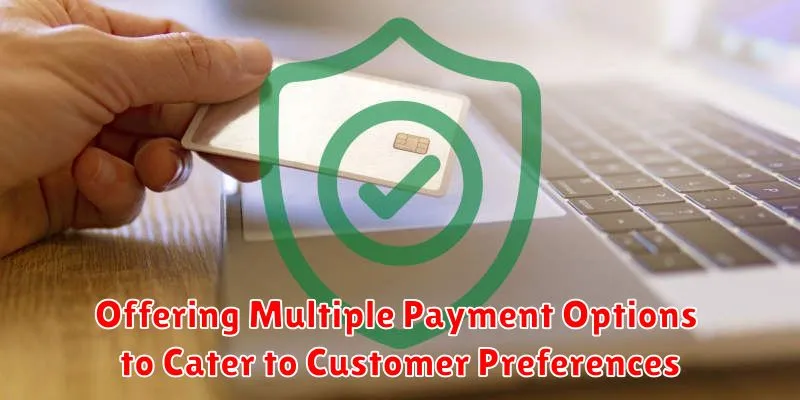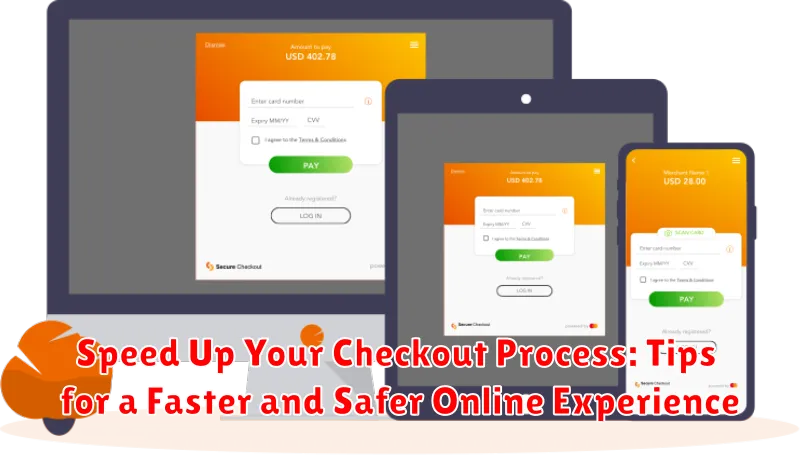In today’s fast-paced world, a streamlined and secure online checkout experience is paramount. Customers expect a fast, efficient, and safe way to complete their purchases. A slow or complicated checkout process can lead to abandoned carts, lost sales, and ultimately, damage to your brand’s reputation. This article will provide actionable tips to speed up your checkout process, ensuring a faster and safer online experience for your customers, boosting conversions, and cultivating customer loyalty.
Optimizing your checkout process is crucial for any online business seeking to thrive in the competitive e-commerce landscape. From minimizing required fields to offering multiple payment options and prioritizing security measures, every step plays a vital role in shaping the customer journey. By implementing the strategies outlined in this article, you can significantly speed up your checkout process, creating a faster, safer, and more seamless experience that encourages repeat business and fosters trust with your valued customers.
Understanding the Importance of a Fast and Secure Checkout
In today’s fast-paced digital world, a streamlined and secure checkout process is crucial for online businesses. Customers expect a frictionless experience, and any obstacle during checkout can lead to cart abandonment and lost sales.
A fast checkout minimizes the time and effort required for customers to complete their purchase. This is particularly important for mobile shoppers who often have limited patience and are prone to distractions. Lengthy forms, complicated navigation, and slow loading times can quickly deter potential buyers.
Security is equally paramount. Customers need to feel confident that their personal and financial information is safe when making online purchases. A secure checkout process instills trust and encourages repeat business. Conversely, security breaches and data compromises can severely damage a business’s reputation and lead to legal and financial repercussions.
By prioritizing both speed and security, businesses can create a positive checkout experience that fosters customer loyalty and drives sales growth.
Optimizing Your Checkout Page for Speed and Conversions
A streamlined checkout experience is crucial for converting potential customers into paying ones. Minimize the number of fields customers need to fill out. Request only essential information to reduce friction and encourage completion.
Page load speed directly impacts conversion rates. Optimize images, minimize HTTP requests, and leverage browser caching to ensure a fast-loading checkout page.
Clearly display progress indicators so customers know where they are in the checkout process. This reduces anxiety and encourages them to continue.
Offer multiple payment options to cater to diverse customer preferences. This includes credit/debit cards, digital wallets, and other popular payment methods.
Mobile optimization is essential. Ensure your checkout page is responsive and functions flawlessly on all devices. A seamless mobile experience is key to capturing sales from on-the-go shoppers.
Implementing Secure Payment Gateways for Enhanced Security

A secure payment gateway is crucial for building trust and protecting customer data. Choosing the right gateway is a critical decision for any online business. It’s the digital equivalent of a secure point-of-sale system in a physical store.
PCI DSS compliance is non-negotiable. This standard mandates security requirements for handling sensitive cardholder data. Ensure your chosen gateway adheres strictly to these regulations.
Look for gateways offering tokenization. This process replaces sensitive card details with unique tokens, reducing the risk of data breaches. Even if compromised, tokens are useless to attackers.
3D Secure authentication (like Verified by Visa or Mastercard SecureCode) adds an extra layer of protection. This requires customers to verify their identity through a separate channel, preventing unauthorized transactions.
Fraud detection and prevention tools are essential. These tools analyze transactions in real-time, flagging suspicious activity and minimizing fraudulent purchases.
Streamlining the Checkout Process with Guest Checkout Options
Offering a guest checkout option can significantly reduce friction in the purchasing process. Many customers abandon their carts when forced to create an account, especially for first-time purchases. Guest checkout allows them to quickly complete their order without the extra steps of account creation.
By allowing customers to proceed through checkout without registering, you’re removing a significant barrier. This can lead to increased conversions and a smoother customer experience. While encouraging account creation offers benefits like order tracking and personalized recommendations, requiring it can deter impulsive purchases and discourage customers who are pressed for time.
Consider offering both options: guest checkout and account registration. Clearly label the guest checkout option to make it easily accessible. This approach caters to a wider range of customer preferences, offering both convenience and the option for deeper engagement with your store.
Using Address Autocomplete and Verification to Reduce Errors
Address entry is a critical component of any online checkout. Typos and incorrect information can lead to failed deliveries, frustrated customers, and lost revenue. Integrating address autocomplete and verification tools can significantly improve this process.
Address autocomplete suggests addresses as the customer types, reducing keystrokes and minimizing errors from the start. This feature speeds up the checkout process and improves the user experience.
Address verification goes a step further by confirming the validity of the entered address. It checks for inconsistencies and ensures the address is deliverable. This reduces the risk of shipping to incorrect locations and the associated costs.
By implementing these features, businesses can reduce cart abandonment due to address errors and increase successful order fulfillment. This leads to a more satisfying checkout experience for customers and improved operational efficiency for the business.
Offering Multiple Payment Options to Cater to Customer Preferences

A key aspect of a streamlined checkout process is providing a variety of payment methods. Offering multiple options caters to a wider customer base and reduces cart abandonment due to limited payment choices. Customers appreciate the flexibility to choose their preferred method, whether it’s a credit card, debit card, digital wallet, or buy now, pay later service.
Accepting major credit and debit cards is essential. Consider incorporating popular digital wallets like Apple Pay or Google Pay for a faster, more secure mobile checkout experience. For larger purchases, offering financing options like buy now, pay later plans can increase conversions.
Clearly displaying accepted payment methods early in the checkout process sets expectations and reassures customers. This transparency contributes to a smoother, more efficient checkout flow.
Leveraging Mobile Optimization for Seamless Checkout on Any Device
In today’s mobile-first world, optimizing your checkout process for mobile devices is no longer a luxury, but a necessity. A smooth, frictionless mobile checkout experience is crucial for converting mobile shoppers and boosting sales.
Responsive Design is paramount. Your checkout page should adapt seamlessly to different screen sizes, ensuring a consistent and user-friendly experience on smartphones, tablets, and desktops. Input fields should be large enough to tap comfortably, and buttons should be clearly visible and easy to press with a thumb.
Minimize the number of steps required to complete a purchase. Streamline the process by reducing form fields to only essential information. Consider offering guest checkout options to avoid forcing account creation. Pre-fill information wherever possible, such as shipping addresses and payment details.
Page load speed is critical on mobile. Optimize images and minimize HTTP requests to ensure fast loading times. A slow checkout process can lead to abandoned carts and lost revenue. Test your mobile checkout speed regularly and address any performance bottlenecks.
Building Trust and Security with Clear Security Badges and Policies
Security is paramount in online transactions. Displaying trust badges from reputable security providers like Norton or McAfee can instantly reassure customers that their information is safe.
Clearly present your security policies, including data encryption methods and privacy practices. A dedicated security page can address common concerns and build confidence. Use concise language and avoid technical jargon.
SSL certificates are essential. Ensure your site has a valid SSL certificate, indicated by the padlock icon in the browser’s address bar. This encrypts data transmitted between the customer and your website.
Consider offering two-factor authentication as an additional security layer for customer accounts and during the checkout process. This extra step can significantly reduce the risk of fraudulent activity.
Analyzing Checkout Data to Identify Areas for Improvement
A crucial aspect of optimizing your checkout process involves analyzing relevant data to pinpoint bottlenecks and areas for improvement. This data-driven approach allows for targeted interventions that directly address pain points in the customer journey.
Key metrics to track include cart abandonment rate, average checkout time, and conversion rates at each stage of the checkout funnel. By monitoring these metrics, you can identify specific steps where customers are dropping off or experiencing friction.
For instance, a high cart abandonment rate at the payment stage might indicate issues with payment options or security concerns. A lengthy average checkout time could suggest a cumbersome form or confusing navigation.
Utilize analytics platforms to segment data and gain deeper insights. Analyze checkout behavior based on demographics, device type, or acquisition source. This granular analysis can reveal hidden patterns and inform personalized optimization strategies.
Regularly reviewing and acting upon this data is essential for continuous improvement and a more streamlined checkout experience.

